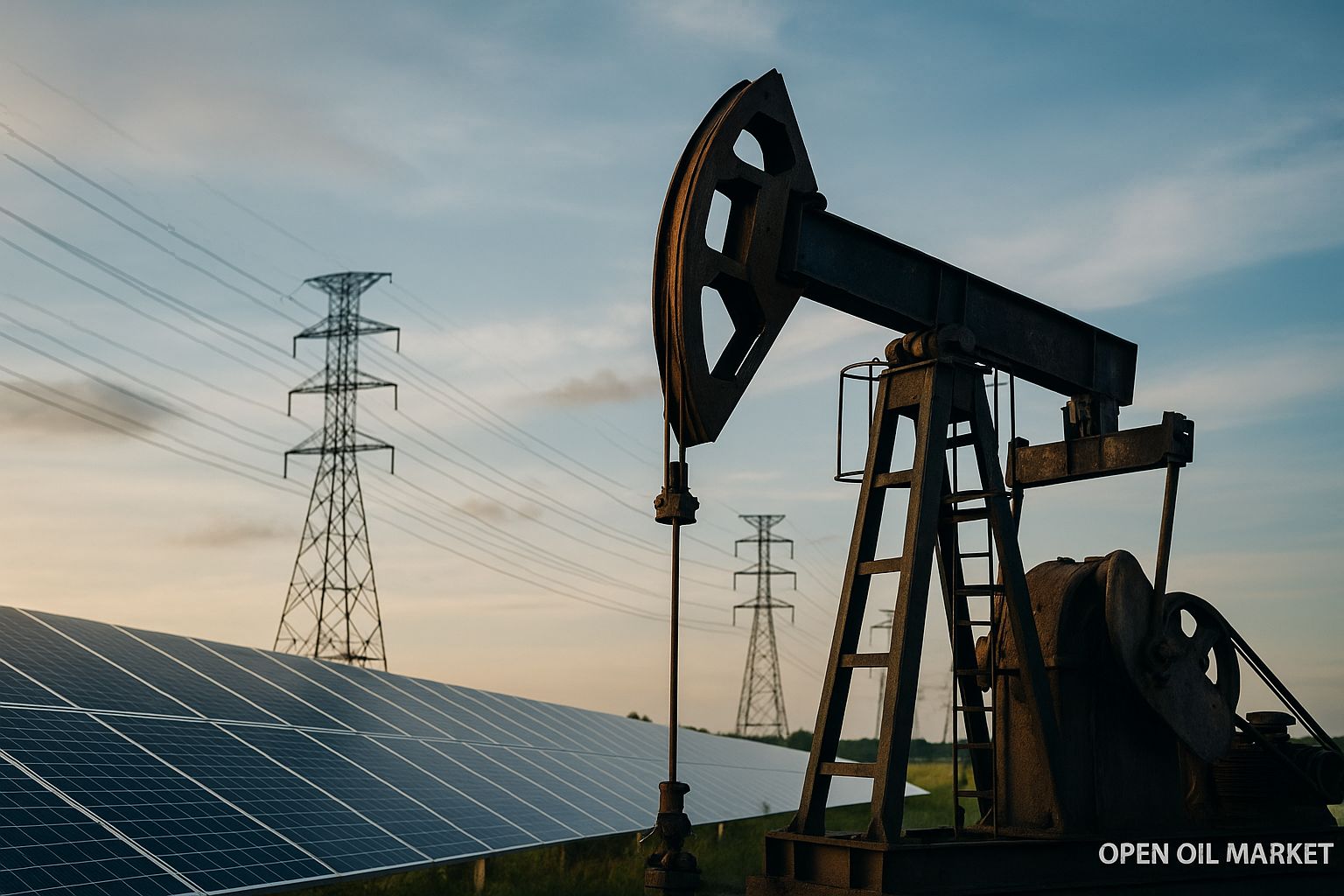
Economic News for August 27, 2025: U.S. Tariffs on India, Inflation in Russia, Profit of Chinese Manufacturing Enterprises, U.S. Oil Reserves, and Leading Companies' Reports. Analyzing the Impact of Events on Global Markets and Investments.
Today, global financial markets and investors are focused on several significant events. At the center of attention are the trade tensions between the U.S. and India, fresh data from China, oil price dynamics, and inflation indicators in Russia. Additionally, reports from several major companies are expected, which could influence investor sentiment.
Key Events of the Day
- U.S. – India, Trade Tariffs: The U.S. imposes additional tariffs on goods from India due to New Delhi's cooperation with Moscow in the oil sector.
- China, Industrial Profit: Release of statistics on the profits of major industrial enterprises for July, early in the morning (04:30 Moscow time).
- Oil Market, Supplies: Weekly EIA data on U.S. oil inventories (17:30 Moscow time), influencing oil prices.
- Russia, Inflation: Preliminary data on consumer inflation (CPI) for the past week (19:00 Moscow time).
- Corporate Reports: Financial results from several large public companies (U.S., Asia, Russia) for the reporting period.
U.S. and India: New Trade Tariffs
The U.S. is tightening trade measures against India. Starting today, the U.S. administration is imposing an additional 25% tariff on several Indian goods. Cumulatively, the tariff on Indian imports to the U.S. reaches 50%. This measure is a response from Washington to India’s continued purchases of Russian oil despite sanctions pressure. Earlier in August, President Donald Trump ordered a phased increase in tariffs: the first phase (25%) took effect on August 7, with a doubling of tariffs on August 27. According to the U.S. side, the aim is to reduce revenue to Russia from oil exports through third countries.
India's Reaction to the tightened sanctions pressure is influencing its trade policy. New Delhi has officially expressed disagreement with the new tariffs, labeling them unfair. According to industry sources, Indian importers have already begun to gradually reduce purchases of Russian oil to mitigate potential losses from the 50% tariffs. Investors and analysts are assessing how this standoff will affect bilateral trade: India is a significant trading partner of the U.S., and the increased tariffs could impact a wide range of sectors—from pharmaceuticals to steel products. In the short term, markets are factoring in the risks associated with the new tariffs, reflected in the cautious dynamics of the Indian rupee and the country’s stock indexes.
China: Industrial Profit Statistics
Early this morning, China released data on the profits of major industrial enterprises for July. This indicator provides insight into the effectiveness of China's real economy sector, which is essential for global investors. In recent months, there has been some recovery: for instance, in June, industrial profits decreased by 4.3% year-on-year (compared to a 9.1% drop in May). The July report will reveal whether the industrial sector has shifted to growth or at least slowed the decline.
High-tech sectors remain a driver of relative stability in Chinese industry. Earlier in the year, the output and profit of high-tech manufacturers (e.g., electronics, batteries, semiconductors) grew at double-digit rates, compensating for weaknesses in traditional sectors. Investors are closely examining the fresh numbers: if July's profit shows growth or a smaller decline, it could indicate the effectiveness of the economic support measures that Beijing intensified during the summer. Otherwise, a continued drop in profits would confirm persistent issues with domestic demand and exports. Market reaction in China to this data has been restrained: the Shanghai Composite index opened with negligible changes since the results generally met analysts' expectations.
Oil Market: Supplies and Prices
Today, in the spotlight of investors in the commodity market is EIA statistics on U.S. oil inventories. The weekly report from the U.S. Department of Energy (due at 17:30 Moscow time) will show the change in commercial crude oil inventories for the last week. The analyst consensus predicts a substantial reduction in inventories of about 5–6 million barrels after an unexpected increase the previous week. If the forecast holds true and a noticeable outflow of oil is indeed found in storage, this would support prices.
Oil prices are trading near their recent highs ahead of the data release. North Sea Brent is hovering around $68 per barrel, gradually increasing in price amid expectations of inventory reductions and the extension of voluntary production restrictions by key producers. It is worth noting that Saudi Arabia and Russia have previously extended cuts in oil production, reducing supply in the market. On the other hand, ongoing concerns about demand (related to China's economic slowdown and the overall rise in global interest rates) somewhat limit price growth. The balance of these factors keeps quotes within a relatively narrow range. Investors in the oil and gas sector are also monitoring the dynamics of petroleum products: for instance, gasoline and distillate inventories in the U.S. are declining seasonally, which may also indirectly affect oil prices.
Inflation in Russia: New CPI Data
In the evening, preliminary data on consumer inflation in the RF for the past week will be released. As August comes to a close, Russia traditionally observes a slowdown in inflation due to the decreasing prices of fruit and vegetable productions. From August 12–18, the country recorded slight deflation—consumer prices fell by 0.04%. This marks the fourth consecutive week of recorded weekly price decreases. Consequently, the annual inflation rate, according to the Ministry of Economic Development, has slowed to approximately 8.5% (down from 9.4% in June).
New CPI figures will indicate whether deflationary dynamics persisted during the third decade of August. If prices continued to slightly decrease or remained stable, the annual inflation rate would retreat further from recent peaks. This is a crucial signal ahead of the upcoming Bank of Russia meeting in September. The regulator closely monitors current trends: a persistent slowdown in price growth could create conditions for easing monetary policy. It is noteworthy that the Bank of Russia updated its inflation forecast for 2025, anticipating it in the range of 6-7% given the continuation of a tight policy. Meanwhile, core inflation remains elevated, and public inflation expectations increased in August to approximately 13.5%. Thus, market participants do not rule out that the Bank of Russia will act cautiously. The release of fresh CPI data this evening will help shape clearer expectations regarding the regulator's next steps.
Equity Markets: Indices and Currencies
Global equity indices display mixed dynamics in light of the mentioned events. Yesterday on Wall Street, the major U.S. indices closed with slight declines: the S&P 500 fell by 0.4%, the Dow Jones by 0.1%, and the Nasdaq by 0.2%. Investors partially locked in profits following last week's rally, which was triggered by signals from the Federal Reserve regarding a possible policy easing. An additional factor of caution was the unexpected news of White House intervention in the Federal Reserve's operations: President Trump removed one of the Fed's governors. This heightened uncertainty regarding the independence of the U.S. Central Bank, although it did not prompt a direct market reaction, resulting only in a brief spike in volatility.
In Europe, Tuesday's sentiment was generally negative. The pan-European Euro Stoxx 50 dropped about 0.8%, reflecting investors' concerns over geopolitics and rising bond yields. European stocks had earlier shown growth amid strong corporate reports, but now heightened uncertainty is prompting traders to act more cautiously. In Asia, caution also prevailed in the morning: the Japanese Nikkei 225 fell nearly 1% to a two-week low. Pressure on the Japanese market was exerted by the strengthening yen following the aforementioned news from the U.S. In China, the Shanghai Composite index oscillated around zero: investors are evaluating the new statistics and awaiting further stimuli from the government.
The Russian market followed global trends the day before. The Moscow Exchange Index was under pressure throughout yesterday's session, at one point falling more than 1%; however, by closing, it lost only a fraction of a percent. The absence of new geopolitical risks and stabilization of oil prices helped domestic buyers keep the market from deeper declines. The Russian currency remains relatively weak: the U.S. dollar fluctuates near the level of 80 rubles. The strengthening of the ruble is hindered by capital outflows and external debt repayments, although high oil and gas revenues support the budget and stabilize the currency market. In the coming days, the dynamics of the ruble will depend on both the overall appetite for risk in emerging markets and the situation with energy prices.
International Companies' Reports
On Wednesday, investors are also focused on the corporate reports of several leading companies included in global stock indices (S&P 500, Nasdaq, etc.). The results of these issuers will provide insight into the state of key sectors—from technology to consumer demand:
- NVIDIA (NVDA) – the largest microchip manufacturer (U.S.). It will report its results for the second quarter of the 2025 financial year after the market closes. Significant revenue growth is expected due to soaring demand for artificial intelligence chips. Investors consider NVIDIA's report to be one of the main events of the week, given the company's role in the technology sector rally.
- Snowflake (SNOW) – a cloud IT platform for data storage (U.S.). It will publish its quarterly results; the market will assess the revenue growth rates and the number of new large clients, which serve as indicators of corporate IT spending.
- HP Inc. (HPQ) – a manufacturer of PCs and printers (U.S.). It will present its financial results for the third quarter. Focus will be on the state of the personal computer and peripherals market. Following last year's decline, investors hope to see signs of recovery in electronics demand.
- CrowdStrike (CRWD) – one of the leaders in cybersecurity (U.S.). Its report for the second quarter will show the dynamics of subscriptions to its cloud data protection services. The information security sector remains a priority for many corporations, which may reflect in stable revenue growth for CrowdStrike.
- Alibaba Group (BABA) – the largest e-commerce and IT company in China. Financial results for the last quarter (April–June) are expected to be published. These figures will be indicators of the state of consumer demand in China and the effectiveness of economic support measures. Investors will pay special attention to revenue growth in Alibaba’s online commerce and cloud technology segments.
Other companies from the U.S. high-tech sector (including the cloud service MongoDB, software developer Veeva Systems, and software manufacturer Autodesk) will also release reports. In Canada, the largest bank Royal Bank of Canada (RBC) will report its third financial quarter today, which is essential for assessing the state of the North American financial sector. Overall, the earnings season in the U.S. is nearing its conclusion, and most companies in the S&P 500 have already published results, showing a cumulative profit growth of about 10-13% year-on-year. New releases on August 27 have the potential to set the tone for the final phase of quarterly reports and influence sentiment on stock markets by the end of the week.
Russian Companies' Reports
In the Russian market, the publication of financial reports from major issuers for the first half of 2025 (IFRS) continues. Results from several companies, representing various sectors of the Russian economy, are expected today:
- Polyus – the leading gold mining company in Russia. It will publish consolidated results for the first six months of 2025. Investors expect to learn how fluctuations in gold prices and production volumes have reflected on financial indicators. Gold traded in a broad range during the first half of the year, and Polyus's results will reveal the company's effectiveness amid the volatility of the precious metals market.
- RusAgro – one of the largest agro-industrial holdings. It will present results for the half year. Of particular interest will be the indicators of export-oriented segments (fat-and-oil, sugar) against the backdrop of existing export restrictions and volatility in global food prices. RusAgro's results will provide insight into how well domestic demand and state support measures compensate for external pressures.
Several other second-tier issuers are also disclosing their financial results today or in the coming days (real estate developers, regional energy companies, etc.). Overall, the first half of 2025 for the Russian corporate sector has been challenging—on one hand, high prices for raw materials supported exporters, while on the other, domestic demand faced pressure due to declining real incomes and rising credit costs. Therefore, investors are closely analyzing the semi-annual reports: they will help adjust forecasts for companies' profits and understand which sectors are faring better than others. Metrics relating to debt load, free cash flow, and profitability will be particularly important—these indicators influence the prospects for dividend payments and the investment attractiveness of Russian stocks in the second half of the year.




